Tucked away in the lush heart of Asturias, Somiedo Natural Park really does feel like another world. Glacial lakes glint between rugged peaks, and those traditional thatched huts—locals call them ‘teitos’—pop up across the meadows.
It’s one of the rare spots in Spain where you can actually look for wild brown bears while hiking through untouched mountain landscapes.
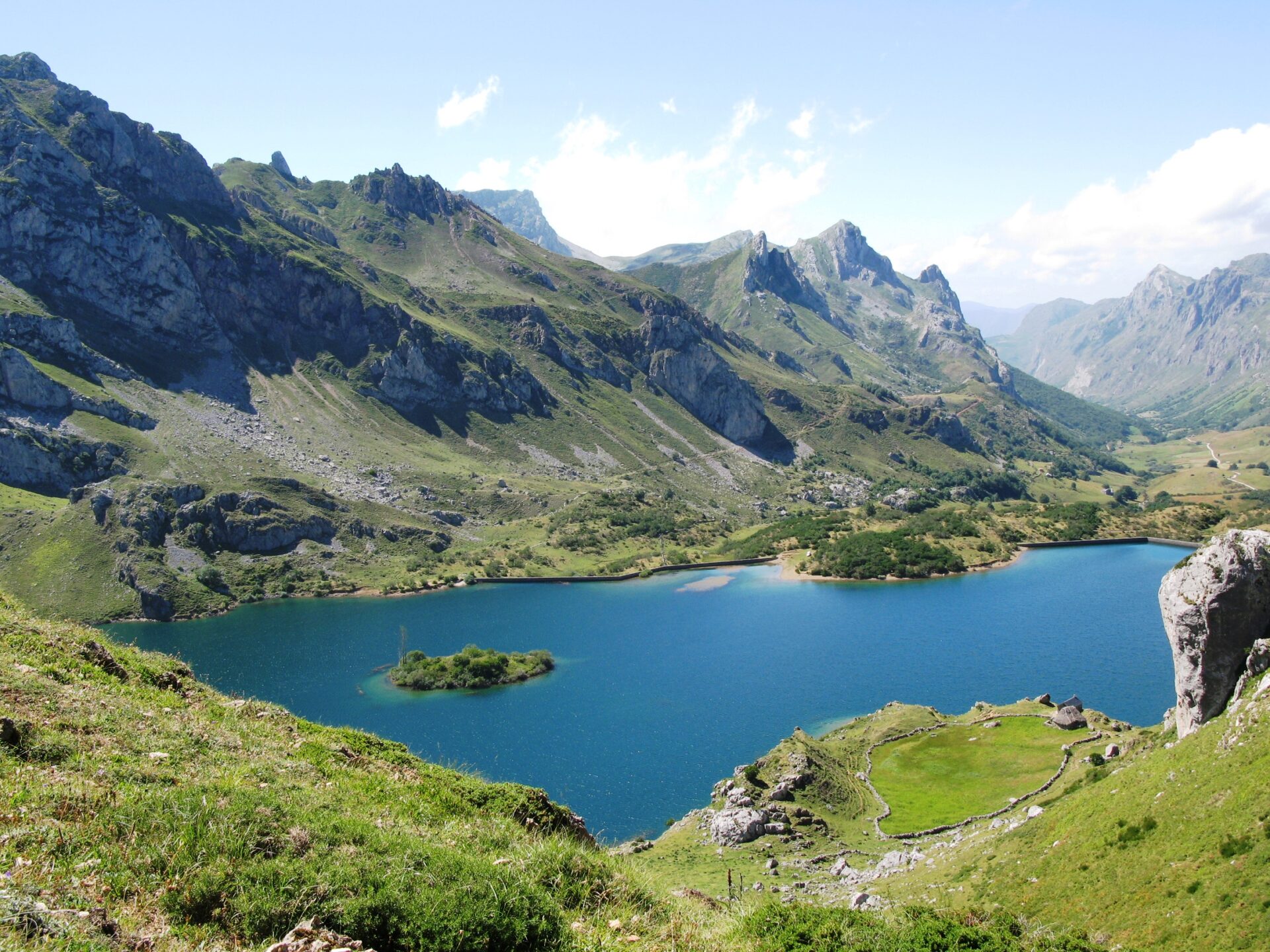
Image Source: Wikimedia Commons
Every twist in the trail brought something unexpected: wildflowers underfoot, old forests overhead, and always that hope of glimpsing wildlife moving silently through the mist.
I walked with a local guide and picked up stories about how nature and tradition still manage to live side by side here. Locals still use those centuries-old huts, and rare animals like Cantabrian brown bears and wolves call this place home.
Somiedo isn’t just about wildlife. It’s a lively mix of culture, wild nature, and a kind of peaceful quiet that made me want to keep wandering.
First Impressions of Somiedo Natural Park
Deep in Asturias, Somiedo Natural Park stands out as a haven for anyone who loves the outdoors. Rugged mountains, twisting roads, and old-world villages set the mood long before you even reach the park.
Journey into Asturias’ Wild Heart
My journey started on a silent mountain road, winding through valleys wrapped in early morning mist. Stone villages and thatched huts—those teitos—dotted the hillsides, looking almost unchanged from decades ago.
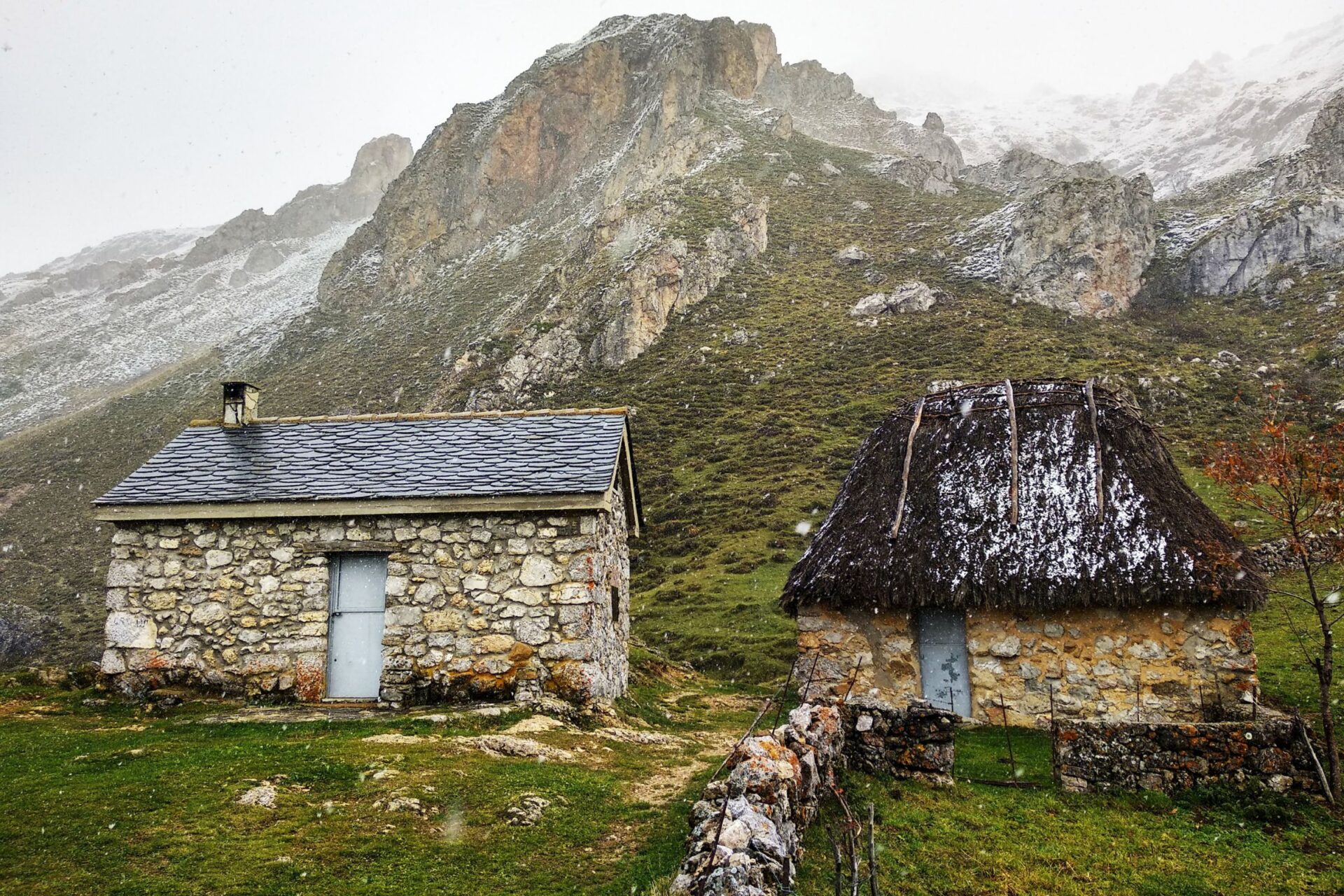
As I slowed through narrow streets, locals waved, making the place feel genuinely welcoming. The air got cooler as I climbed, and it felt like I was really heading into bear country.
I stopped to admire wildflower-filled fields, with soaring peaks in every direction. Every bend brought something new: crofts perched above deep woods, rivers winding through gorges below.
It’s wild and peaceful, somehow both at once.
Park Overview and Practical Visitor Insights
Somiedo Natural Park covers over 290 square kilometers. Glacial lakes, thick beech forests, and open meadows full of cattle fill the landscape.
You can start hiking right from the villages, thanks to a network of well-marked trails. You never really feel lost, just a little bit away from everything.
Visitor tips:
- Parking is available at main trailheads, but the lots fill up fast—so I made it a point to arrive before sunrise.
- Guided wildlife excursions are popular, especially if you’re hoping to spot bears. Most start at dawn, when animals are out and about.
- The terrain is rugged, so I wore sturdy shoes and packed extra layers. The weather can flip on you, even in summer.
- Small cafés and rural guesthouses, often run by local families, offer meals and cozy places to rest.
Every detail in Somiedo feels shaped by both wild nature and old traditions. I think that’s the real charm here.
Tracking Wildlife: The Quest for Brown Bears and Beyond
Wildlife thrives in Somiedo Natural Park. People come hoping to see brown bears wander the valleys or maybe catch the distant call of a wolf at night.
There are quiet forests, sweeping meadows, and hidden lakes, all buzzing with life if you’re patient.
Best Spots to Observe Brown Bears
My first stop? The bear observatory in Somiedo. Early mornings and evenings gave me the best shot at seeing the Cantabrian brown bear.
Local guides, who really know their stuff, led me to the best viewpoints. They set up scopes for guests and pointed out fresh tracks or claw marks on tree trunks.

From the ridges above Valle de Lago to the dark forests near Pola de Somiedo, guides tracked recent bear activity. Some days, I had to be patient—these bears are shy and steer clear of crowds.
With a bit of luck and persistence, I finally spotted one lumbering along a distant hillside. If you want to see bears, I’d really suggest joining a guided tour. The guides know the right spots and how to watch without bothering the animals.
Other Wildlife Encounters: Wolves, Deer, and Birds
Bears might be the star, but at dusk I listened for wolves howling from deep in the wild corners of the park. Watching red deer graze in misty meadows became a daily treat, especially in autumn when stags call out during the rut.
Birdlife wowed me too. Griffon vultures circled above the cliffs, and once I caught a golden eagle soaring overhead. Down by the streams, otters hid in the reeds, and butterflies danced across the meadows.
Sometimes, sitting by a glacial lake, I’d hear woodpeckers tapping on old beech trees. Every trail seemed to offer a new wildlife surprise.
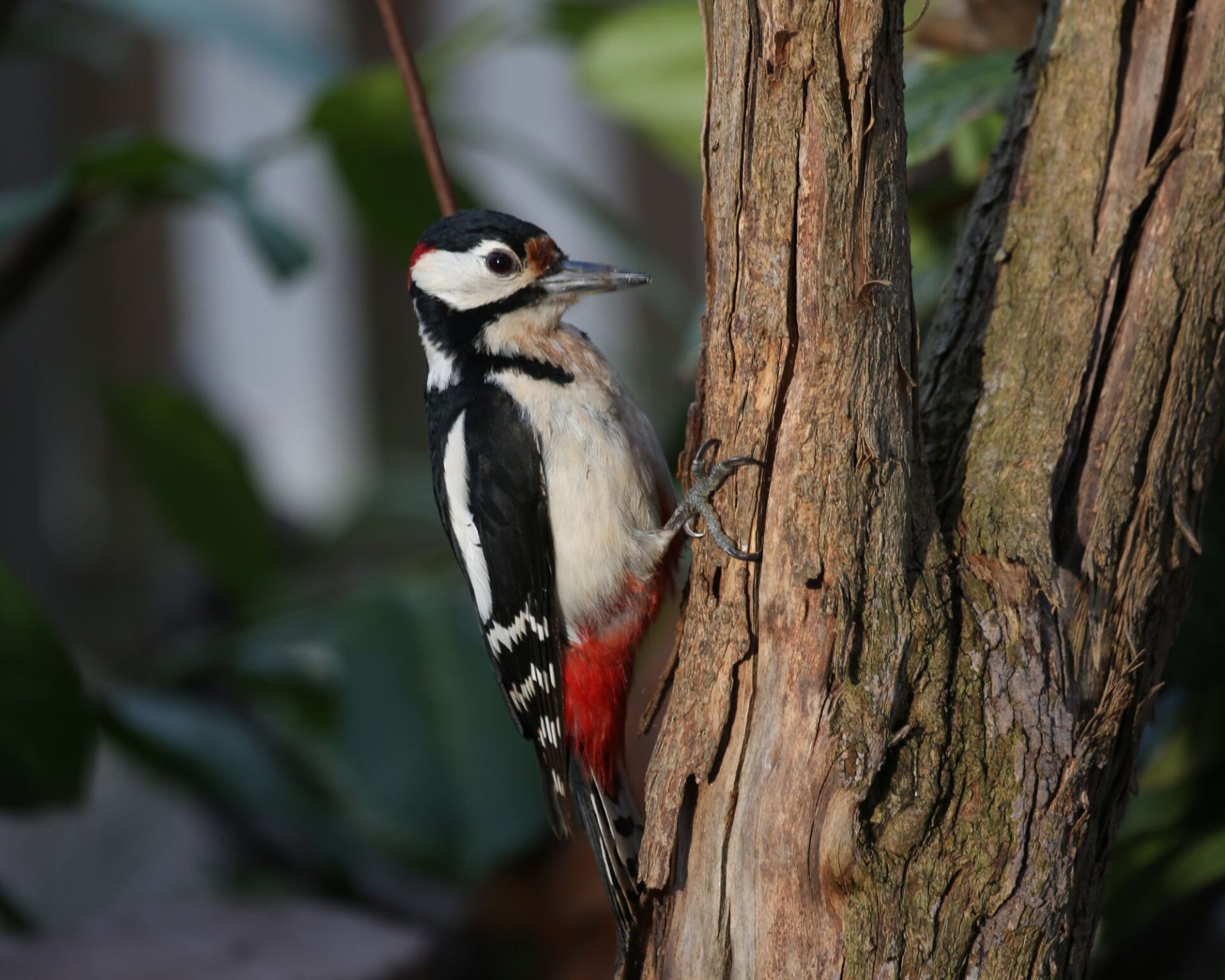
Responsible Wildlife Watching Tips
Respect matters in Somiedo. I always kept my distance from animals, using binoculars or my camera’s zoom instead of getting closer.
Moving quietly and slowly helped keep the wildlife relaxed—and honestly, it made my own experience better.
Guided tours usually share a few basic rules:
- Stick to marked trails so you don’t trample plants
- Take your litter with you
- Never feed wild animals
- Speak softly, especially at dawn and dusk
I wore muted colors to blend in and skipped any strong scents. If you visit, thoughtful behavior helps protect the animals and keeps the magic alive for others.
Glacial Lakes: Hiking Amidst Pristine Waters
Somiedo hides its crystal-clear lakes in deep valleys and high pastures. Trails wind through forests, meadows, and past old shepherds’ huts, with new views around every corner.
Lago del Valle Adventure
Lago del Valle stands as the largest lake in Somiedo Natural Park and pulls in plenty of hikers. You start in the village of Valle de Lago, where stone houses and grazing cows set a peaceful scene.
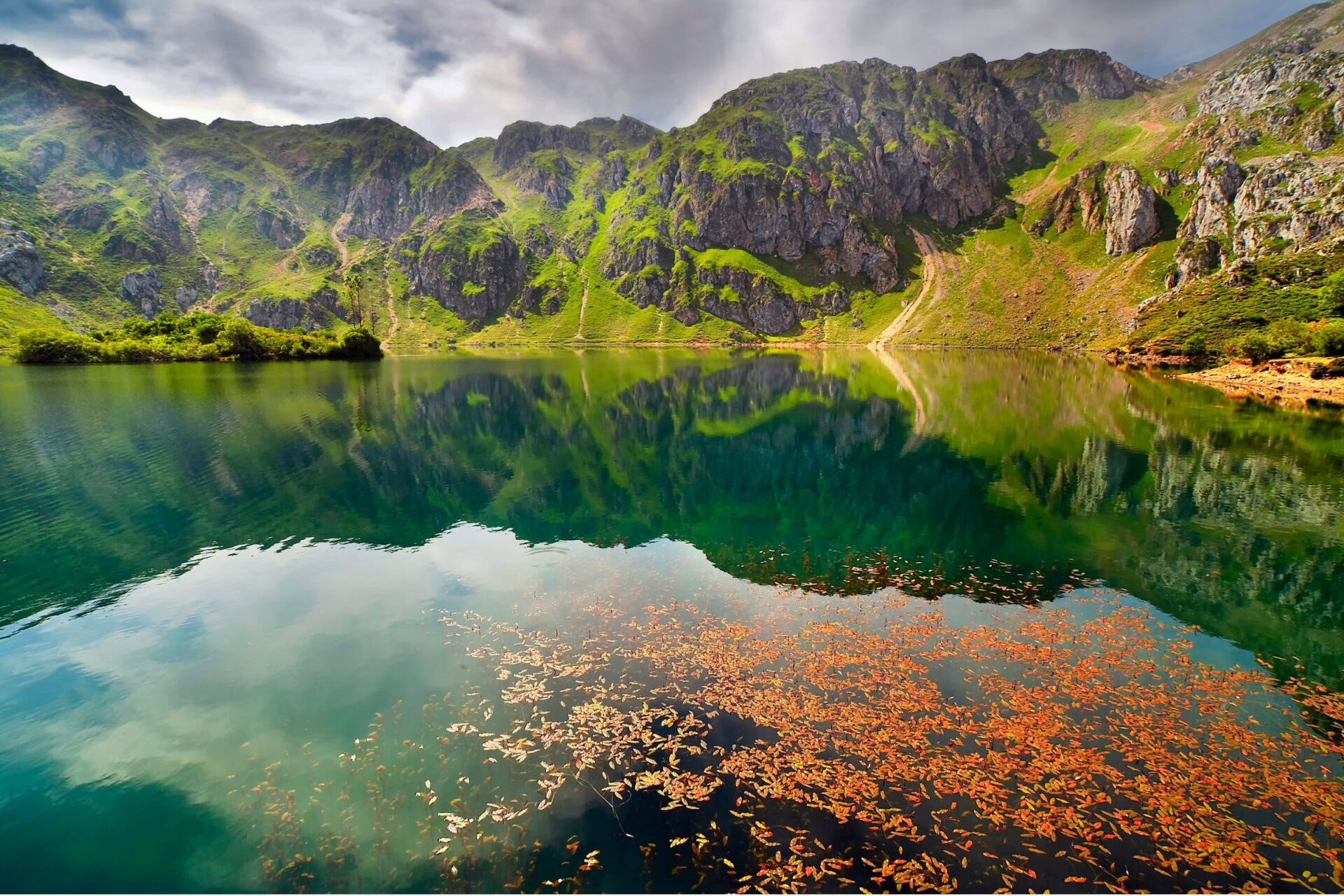
The hike is about 6 kilometers each way, mostly gentle. Along the way, I passed thatched ‘teitos’—unique to Asturias.
Wildflowers and cowbells filled the air. When I finally reached the lake, I found deep blue water surrounded by steep mountains and scattered rocks.
In spring and early summer, snow patches linger on the slopes and grass grows thick and green. It’s a perfect lunch spot, and a great place to spot wild horses or just watch clouds drift in the water’s reflection.
Tips for Lago del Valle:
- Distance: ~12 km round-trip
- Difficulty: Moderate
- Highlights: Mountain views, wildlife, ‘teitos’
Lesser-Known Lakes and Scenic Trails
Asturias’s glacial past shows up best on hikes to the Lagos de Saliencia. This group covers Lago de la Cueva, Lago Calabazosa, and Lago Cerveriz.
Few people make it to these smaller lakes, so the peace feels extra special. The Saliencia loop runs about 14 kilometers, starting from Alto de la Farrapona.
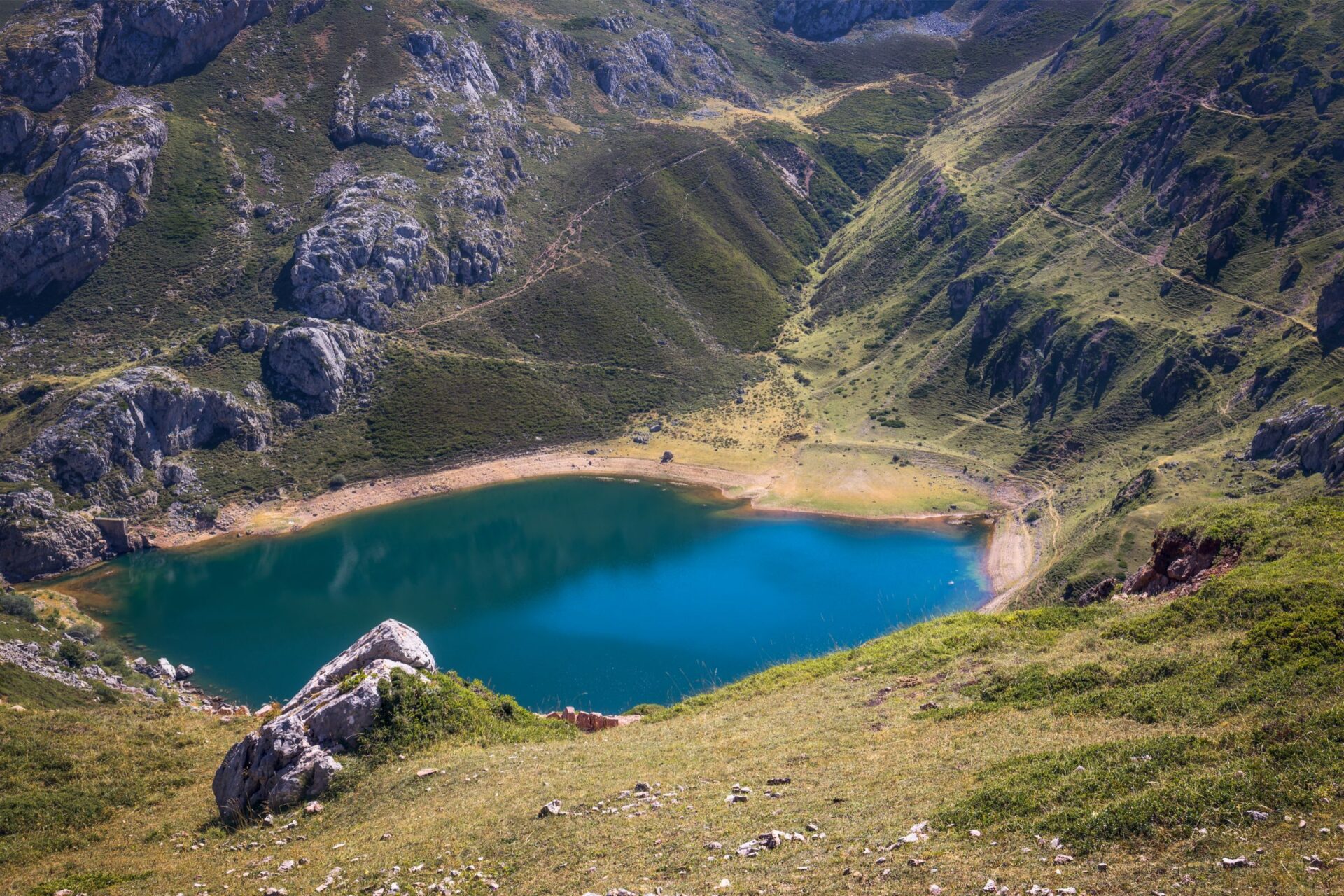
The path is rocky but not too tough. On sunny days, the water reflects the sky so clearly it almost looks fake.
I often spotted griffon vultures overhead and sometimes caught marmots sunning themselves on rocks. If luck is on your side, you might see signs of brown bears or deer in the woods.
Rustic signs point the way, but I still brought a map—just in case.
Essential gear:
- Good hiking boots
- Plenty of water
- Snack or picnic
- Camera for the views
Teitos: Sleeping Under Thatched Roofs
Resting in Somiedo means more than just finding a bed. The teitos—traditional Asturian huts with thick, straw roofs—bring together history, culture, and a truly unique place to spend the night.
History and Heritage of Teitos
Asturian shepherds and farmers built teitos long ago to survive the harsh mountain climate. “Teito” actually means roof in the local language.
These huts use local stone and timber, topped with a roof packed from mountain grass or straw. The thatch keeps out rain, wind, and even snow—warm in winter, cool in summer.
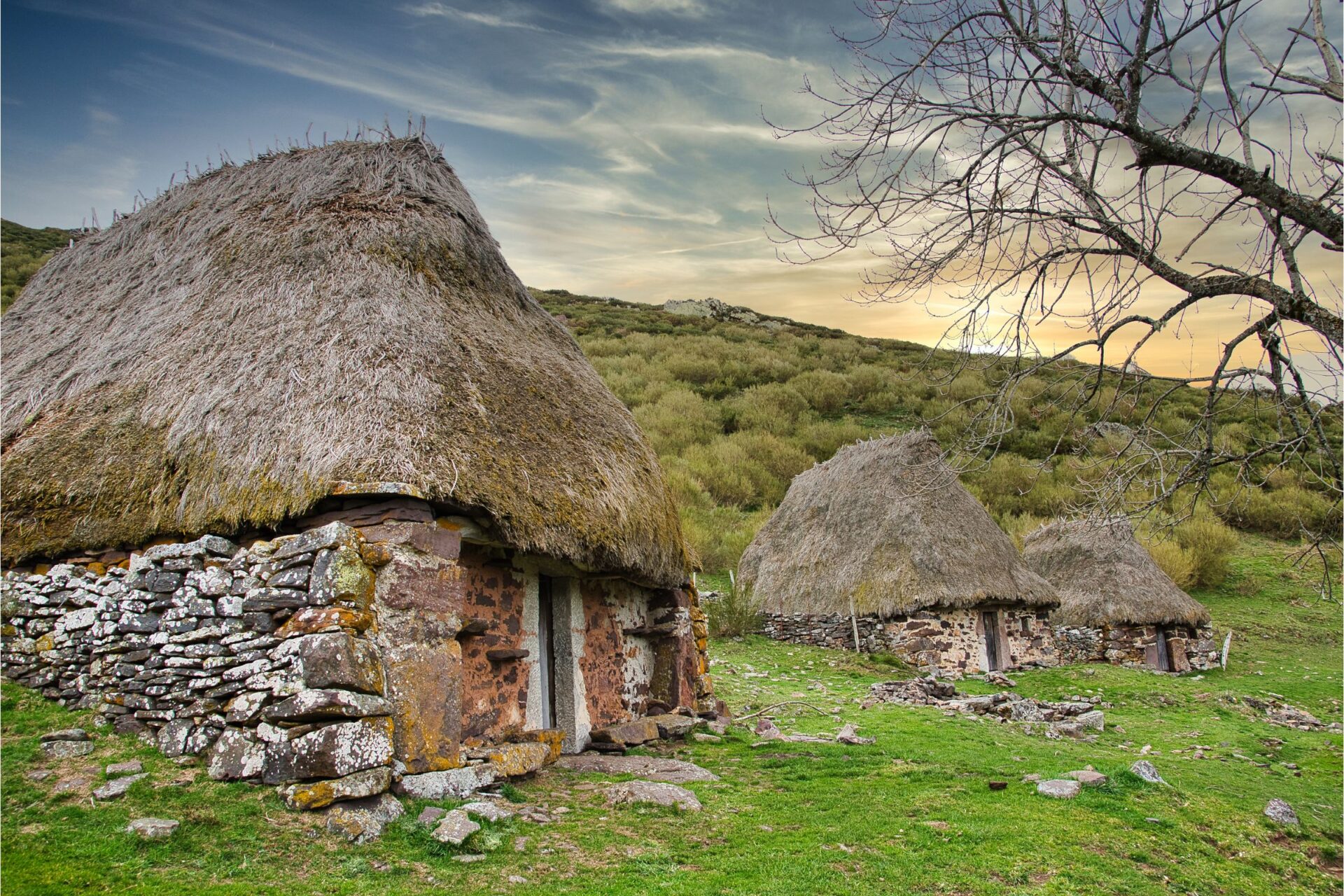
Some teitos have stood for centuries, passed down through families. They blend right into the hills, sometimes scattered along trails or clustered in tiny villages.
Inside, I could smell the earthy straw and wood, feeling connected to a way of life that’s barely changed. You’ll see patches and repairs—proof that people still care for these huts, even as the world moves on.
Meeting the Local Vaqueiro Community
During my stay, I met people from the local Vaqueiro community, who still use teitos during certain seasons. The Vaqueiros de Alzada are semi-nomadic cattle herders, well-known across Asturias for their traditions.
They move with their animals to high pastures in summer, just like their ancestors did. Sitting by the fire, I listened to stories about tough winters, long walks, and the pride they feel in keeping these customs alive.
Some told me how their families worked together to rebuild teitos after storms. Evenings ended with music and laughter echoing around the huts.
Getting to know the Vaqueiros made me realize teitos aren’t just relics—they’re still part of daily life.
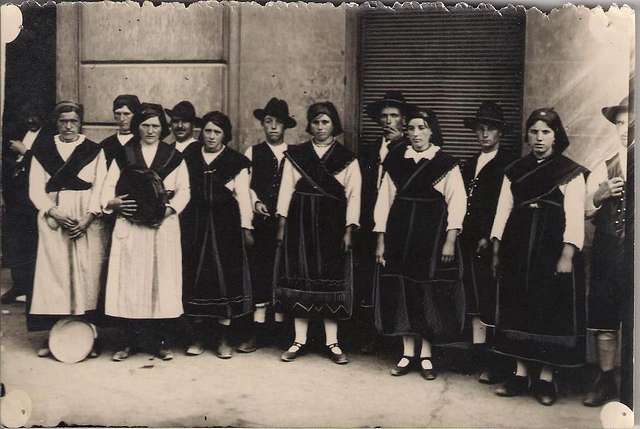
Unique Lodging Experiences in Traditional Huts
Spending a night in a teito felt nothing like a regular hotel. These huts are simple, rustic, and built for comfort in nature, not luxury.
My bed was basic but cozy, and the thick thatched roof muffled every sound. Some huts now have small modern touches—maybe a wood stove or solar lantern—but they keep their original spirit.
Waking up in a teito, I watched morning mist roll off the lakes and sunlight hit the peaks.
Packing tips:
- Bring a warm layer (nights get cold)
- Pack a flashlight (it’s dark inside)
- Embrace the simple life and unplug
Honestly, waking up in a teito gives you a sense of place no hotel can match.
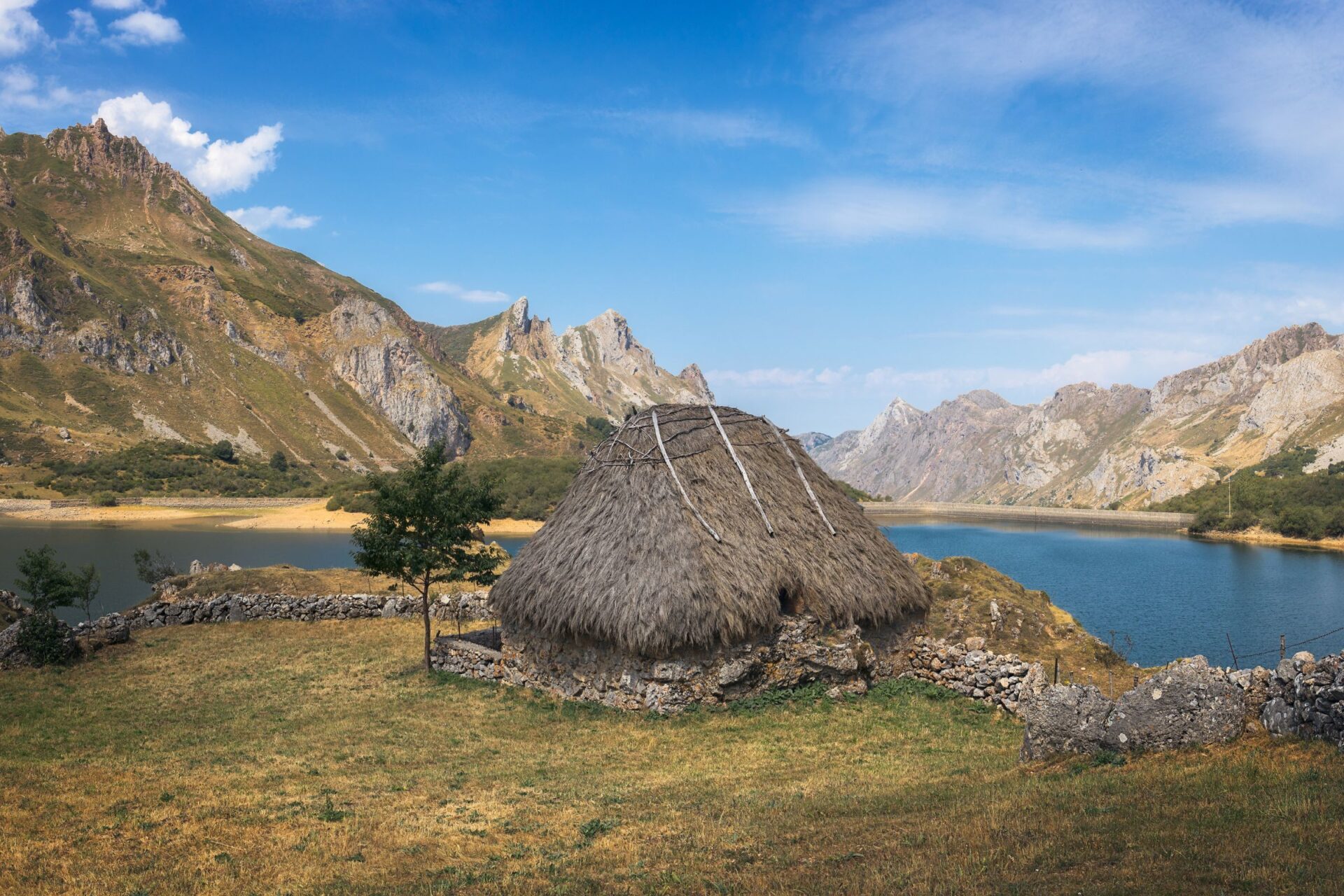
Savoring Asturian Culture and Flavors
In Somiedo, every day ended up as a celebration of Asturias’ heritage and food. Wandering old villages and sharing meals with locals gave me a real taste of northern Spain’s strong traditions.
Iconic Dishes and Where to Eat
You can’t come here and not try fabada asturiana—a rich white bean stew with chorizo, morcilla, and pork. I found my favorite version in a family-run spot in Pola de Somiedo; the smell alone pulled me in.
Cabrales cheese is another must. This blue cheese packs a real punch, usually served with crusty bread and local cider (sidra).
Every bar seemed to have locals pouring sidra from high above their heads—a ritual that’s as fun to watch as it is to drink.
Meals often start with empanadas or feature fresh trout from nearby streams. If you want the real deal, look for small, family-run places. The food always felt more authentic, and the owners loved sharing stories about Somiedo’s food traditions.
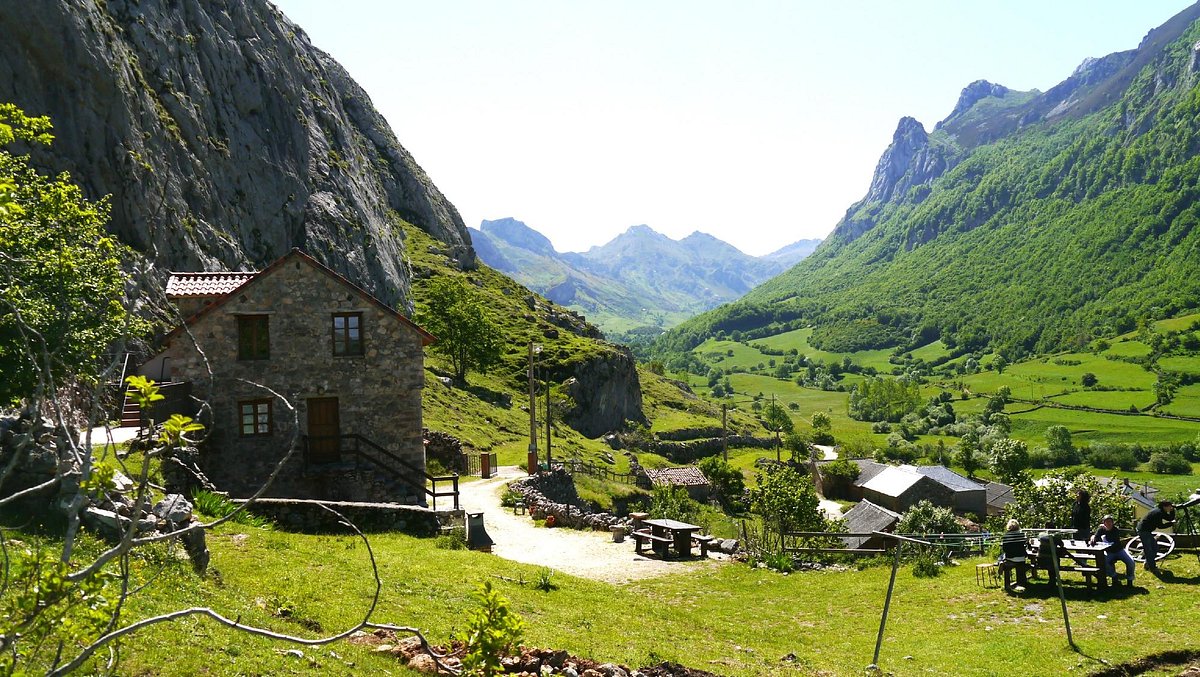
Image Source: Tripadvisor
Festivals and Local Traditions
The villages in Somiedo really come alive during local festivals. Honestly, one of my favorites was the “Fiesta del Pastor.” Sheep herders parade right through town while music fills the air, and everyone gathers to share sidra and dance.
All summer, you hear traditional music—wooden flutes and hand drums echoing off the mountains. People put on these bright, colorful costumes. Elders step up and teach visitors a few folk dances.
I jumped in with a group learning the muñeira. It turned into a lot of laughter, honestly.
Market days are a treat too. Stalls overflow with homemade cheeses, sausages, honey, and crafts.
I found myself chatting with artisans selling wool capes and tiny handmade “teitos” models. Those always remind me of the region’s old thatched huts.
These gatherings made me feel welcome every time, even though I was just passing through.

Image Source: Wikimedia Commons

